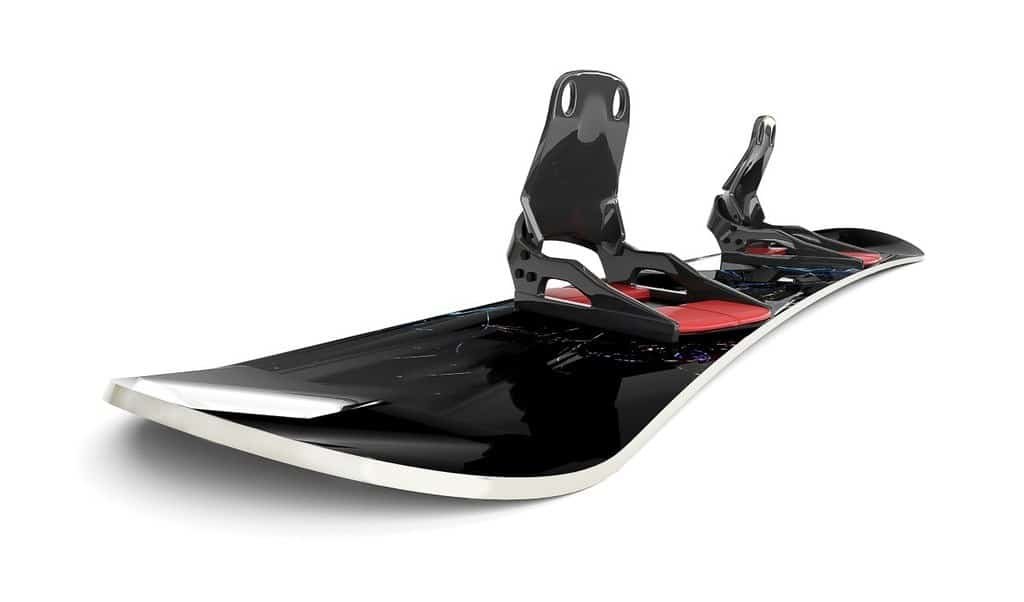Choosing the best snowboard in the market is something that is easy to figure out, but you’ll need to know a few things before you can do it.
People of all ages and sizes can snowboard, so you will have to get a board that won’t be too long, weigh too much, or simply won’t be able to use.
Here is some information on the major things you need to be aware of when you’re choosing a snowboard to purchase.
What Size Snowboard Do I Need
Boot Size
As snowboards come in different widths, your snowboard boot size matters when choosing a snowboard (wide or narrow). As a reference, snowboard widths are measured at the narrowest point, between the bindings.
Choosing by skillset
This is really the place you should start when you’re purchasing your first snowboard or replacing an old one with a new one. You can’t get a professional snowboard if you’ve never even used one before.
There are snowboards that are specially made for beginners, as well as every other level, so you’ll need to be honest about your skills and if you’ve ever used one in the past.
In general, beginner snowboarders will want something mid-length – that is, something a little bit shorter than what they’d purchase if they were a professional.
Shorter boards are easier to carve with and provide a better sense of mobility in general when compared to lengthier snowboards.
It’s a good idea to chop off between two and five centimeters from the length of the board recommended for your height and weight if you’re a beginner.
Choosing by height
You’ll also need to know your height. If you are on the short side, you won’t be able to move a long board, so this is important.
It’s also important because there are children who snowboard, so you can’t purchase something for them made for adults and expect them to be able to use it.
Choosing by weight
Finally, you’ll need to know how much you weigh, which is arguably the most important aspect of the equation.
Again, this is because you need to be able to effectively work the snowboard at all times, to keep from wiping out and hurting yourself.
On the flip side, if you get something flimsy and unable to withstand your weight, you may break or damage it, which can lead to you sustaining serious injuries. It will also leave you looking for a new board.
In general, a lightweight rider is going to want a shorter board and a heavier rider is going to want a longer one.
Other factors
There are a few other factors that come into play when you’re choosing a board. One of these is if you’re a male or female. Since you already need to know your weight and height, this should make sense.
Women and men carry their weight differently, so if you’re a female and require a board, you may benefit from something made specifically for women to use.
Another thing is where you’ll be using the board. As you may know, there are different types of snow, and also different types of terrain when it comes to snowboarding.
If you are only casually using it on powder snow, you’ll need something different than if you intend to use it mainly on hills or steep slopes. This also goes for how frequently you’ll be using it, since it will need to be sturdier and hold up better if you want to use it all the time.
There are also different bracket widths that will need to be addressed, as well as the shape and curve of the board.
All of these things will take looking into a bit if you want to understand what the differences are, and to be sure that you are able to find something that will truly work well for you.
In other words, you should consider each of these things when searching for the perfect model for you.
Is anything else important when choosing a snowboard length?
The last – but not least – thing you’re going to want to evaluate first is your style of snowboarding. Getting a super long snowboard as a freestyler is not a good idea; whereas free riders won’t want to get a board that’s too short. Here’s why.
Freestyle snowboarders are going to be all over the place – they’re going to hit parks, do flips and spins, and generally be using their board to the max of its mobility. For this reason, freestyle snowboarders generally want boards that are shorter. They’re easier to carve with, easier to spin, and they’re lighter so they’re easier to get into the air with longer hang time.
Freestylers should choose a board between 2 and 6 cm shorter than standard.
Freeriders are going to be ripping down mountains and they’re going to be doing it fast and consistently. For this reason, free riders generally choose boards that are a bit longer than average, because larger boards can reach a greater maximum speed and have an easier time maintaining speed.
Freeriders should choose a board between 1 and 4 cm longer than standard
Casual or beginner riders are either just figuring out their style, or have decided that they want to take it easy when they’re on the mountain. For this reason, it’s good for them to have a board that’s easy to maneuver and maintain balance on.
Casual riders should choose a board between 2 and 5 cm shorter than standard.
How do I figure out my standard length?
Patience! We’re not going to leave you empty-handed – we realize telling you to pick a board shorter or longer than standard length does nothing for you if you don’t know what the standard length is.
Standard length is a general measurement deduced by the weight and height of the boarder. Most snowboarding companies have a chart that shows you the recommended board length for riders of various sizes, including Arbor, Burton, Flow, GNU, K2, Lib Tech, Ride, Rome, and Salomon.
These measurements will be applied for a given weight range – for example, between 100 and 140 lbs. This doesn’t mean that you have to fit right in the middle, but as long as you’re not within a couple of pounds of either end, you’ll be able to use that as a benchmark for finding a good fit.
Keep in mind, weight ranges should be evaluated after considering the weight of all your boarding gear.
As for height, different suggestions are given depending on a person’s age and gender. This sounds complicated, but these same companies typically have charts available that show the recommended board length for men / women / youth of different heights.
What about figuring out the width?
Most of the time, a board of the right length will have an appropriate width. Unfortunately, most of the time is not all of the time, so it’s good to be a bit informed.
The best way to determine this is to stand on your board. With bare feet, if your toes reach the edge of the board and your heels reach the back with minimal overhang, then you’re good to go. This is because your feet apply most of the pressure to the board in regard to turning and affecting your range of motion – not your boots.
If you’re buying online, this poses an obvious problem. Fortunately, most companies provide something known as waist width. The snowboard’s waist width is a measurement based on the center of the board that can be applied to your size to conversely draw a measurement of an appropriate board size.
These measurements aren’t always needed to be exact. As long as your boots don’t overhang more than 2 cm on either the toe side or the heel side, and as long as your boots don’t just barely reach the edge, then you’re good to go.
A bit of overhang is a good sign – if there’s none, then the board’s probably too thin for you and your shoeless toes wouldn’t be reaching the edge of the board.
Tips
Always check the snowboard sizing chart from the manufacturer. Also, check for user reviews for recommend sizing if you still have doubts.
Don’t be afraid of opting for a more budget-friendly board first. Of course, as you learn more and become more experienced, you can always buy a better board. This may be expensive, but it is necessary to keep you safe and make sure that you have a chance to shine on the snow.
You will also need to make sure that you can take care of it. Snowboards need to be cleaned and waxed quite often to ensure that they keep working as efficiently as possible; check out my snowbaord waxing guide for more info.
Conclusion
There isn’t an easy answer when you want to know what size snowboard you should get; it’s essentially a matter of getting one that is made for your skill level, weight, height, as well as a few other factors.
This can be difficult, but becomes easier as you do the research beforehand, and go the extra mile to make sure that you are buying from a reputable place.

